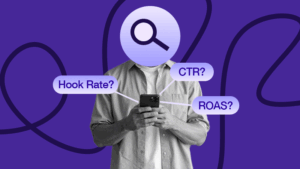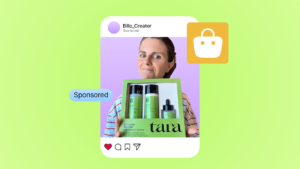E-commerce Marketing Strategies to Drive Traffic and Sales
Passionate content and search marketer aiming to bring great products front and center. When not hunched over my keyboard, you will find me in a city running a race, cycling or simply enjoying my life with a book in hand.

Building an e-commerce store is the easy part. Getting people to visit, and convincing them to buy, that’s where most businesses stall. Fortunately, to achieve your goals, you don’t need a bigger budget. But, you need smarter strategies. And they better work across platforms, devices, and buyer moods.
Let’s walk through which ecommerce marketing strategies actually drive traffic and sales in today’s e-commerce world.
Not recycled advice. Just practical, tested methods that deliver results!
1. Understand Your Customers
Marketing your products without knowing your customers is a huge mistake. It wastes your time, money, and effort. Don’t want to waste all these things? Before you post a product or launch a sale, understand who’s buying and why.
Remember, you can’t sell to “everyone.” Real growth comes from knowing exactly who your core audience is. Then you serve them better than anyone else.
To analyze your customers, study:
- What they search for before buying
- Where they hang out online?
- How they speak about the problem your product solves
For that, you can use surveys, on-site behavior tools, email feedback, and purchase data. All these things can help you know where to invest and improve your marketing strategy.
2. Optimize Your Website for Conversions
Traffic without conversions means nothing. If your store isn’t converting, fix that before scaling traffic. In this scenario, speed matters a lot. If your pages lag, shoppers bounce. And so do profits.
Therefore, add clear calls-to-action, use mobile-friendly design, and create uncluttered layouts to drive decisions.
Moreover, every product page should:
- Highlight value fast
- Use social proof effectively
- Remove friction from checkout
For that purpose, use session recordings, watch where users hesitate, and change what’s slowing them down. Also, test copy, colors, and layouts. A one-word change can shift conversion rates by 10 percent or more.
3. Blogging Isn’t Dead – Boring Blogging Is
Blogging still works, but only if it’s done well. If your blog is boring or doesn’t offer real value, people won’t read it.
Make sure your writing is clear and easy to understand. Use simple words that everyone can follow. But beyond clarity, great ecommerce copy needs to feel human – not like it was stitched together by a bot. That’s why many marketers are learning how to humanize AI in their content creation process with tools like this one that help ensure your product pages, blog posts, and email copy resonate authentically with real people.
A paraphrasing tool powered by AI can help improve your writing. It can fix weak sentences, improve the tone, and suggest stronger words. But even polished text can sound robotic if you rely too heavily on automation. That’s why many creators choose to humanize AI for natural sound, making their blogs feel more personal and engaging for readers.
Also, don’t just write for the sake of writing. Organize your content to lead readers toward taking action. A good blog should:
- Guide readers toward a product or service
- Use internal links to keep them on your site.
Great content attracts buyers early, before your competitors even get the chance.
4. Leverage Email Like It’s Your Most Valuable Asset
Most stores underuse email. They send sales pitches occasionally and call it marketing. That’s not a strategy. That’s a missed opportunity. To achieve better results, build segmented email flows that match your buyer’s journey. Email builds repeat revenue.
Also, it’s direct, cheap, and outperforms many other ad platform when done right.
For effective email marketing, use dynamic product recommendations, test subject lines relentlessly, and don’t stop at the inbox. SMS paired with email increases open rates and conversions.
5. Use Paid Ads That Don’t Waste Your Budget
Spending money on Facebook or Google ads doesn’t always bring results. You can quickly waste money if you target the wrong audience. Instead, begin with retargeting, focus on people who have visited your site but didn’t make a purchase. Retargeting can eventually boost the conversion rate by up to 147%.
They’re more likely to convert. After that, grow your reach using lookalike audiences and search ads based on user intent.
When running ads, remember these tips:
- Match your ad and landing page. If the page doesn’t match what the ad promised, people will leave.
- Avoid creative fatigue. Change your visuals regularly to keep your ads fresh.
- Track the full journey. Don’t just look at the last click; understand how users found and interacted with your content.
Be smart with your ad budget. Every dollar should help you get real results.
6. Influencer Marketing, But the Smart Way
Influencer marketing works. But not if you’re chasing vanity metrics. Therefore, skip the mega-stars. Instead, partner with micro-influencers who drive niche trust.
Why? Smaller audiences = tighter communities. And their endorsements feel real.
Look for creators with:
- High engagement rates
- Buyers in your target niche
- Product experience or trust in your category
Moreover, negotiate content rights. That way, you can reuse their photos, reviews, or videos across your ads and website.
7. Use Social Media to Start Conversations, Not Just Promotions
Brands that only push sales get ignored. Social media is not just a platform to promote your products. Instead, it’s a tool to start conversations. Therefore, build a following that trusts you, not just scrolls past engaging in social commerce as a strategy.
To initiate conversations, create content that speaks to your buyer’s daily challenges.
Show the product in use and post behind-the-scenes videos. Additionally, share reviews that feel raw and real. And always reply to comments.
8. Don’t Ignore SEO, It Still Pays
SEO doesn’t work fast. But it works. And once it kicks in, traffic costs drop permanently.
Start with your category and product pages.
Make sure to optimize titles, meta descriptions, and internal links. Additionally, add FAQs with real questions. Then go after informational content. Additionally, build backlinks through guest posts, resource pages, and outreach to broken links.
Remember, SEO isn’t about tricking Google. It’s about answering searchers better than your competitors. Do that, and you’ll climb rankings naturally.
9. Add Urgency and Scarcity, But Make It Real
People usually delay buying. Unless you give them a reason to act now. And for that, use real urgency. You can use phrases like:
- “Offer ends tonight” with countdown timers
- “Only 3 left” when stock is low
- “Last chance to order for Friday delivery”
No matter what, never fake it. Shoppers notice it. And trust evaporates when urgency feels forced. And when used honestly, urgency nudges indecisive buyers across the finish line.
However, don’t overuse it. Too much pressure also feels gimmicky.
10. Collect Reviews and UGC and Use Them Everywhere
Trust always sells. And nothing builds trust faster than real people talking about your product.
Therefore, ask every buyer for a review. And make it easy for them. For instance, you can reward them for their time. Then repurpose that content across:
- Product pages
- Paid ads
- Emails
- Social posts
Video reviews perform especially well. They show the product in use and add social proof with personality.
11. Track What Matters
Finally, you don’t need more dashboards. Instead, you need to focus better on what matters the most. Always, track your store’s performance and adjust your strategies accordingly.
The most important things to watch include:
- Conversion rates by traffic source
- Customer acquisition cost
- Return on ad spend
- Email open-to-click ratios
- Abandoned cart recovery
But don’t get buried in numbers. Use data to make one change at a time. Then, test the outcome and repeat the same process.
Conclusion
E-commerce growth isn’t about luck. It’s about discipline, smart choices, and constant refinement. You won’t fix everything at once. That’s not the goal. Start with one strategy. Optimize it. And move to the next.
Moreover, stack the right tactics. Keep your focus tight. And measure everything. That’s how you drive traffic that buys.
SEO Lead
Passionate content and search marketer aiming to bring great products front and center. When not hunched over my keyboard, you will find me in a city running a race, cycling or simply enjoying my life with a book in hand.

Authentic creator videos, powered by real performance data
22,000+ brands use Billo to turn UGC into high-ROAS video ads.
Social Commerce Trends To Watch In 2026
Social shopping is no longer a side experiment. As 2025 [...]...
Read full articleAd Hooks That Scale: Turning 1 Winning Angle Int...
Performance teams often think they need endless novelty, but newer [...]...
Read full article3 Ways Shopify Brands Use Billo + Moast Together...
User-generated content (UGC) is no longer just a nice-to-have, it’s [...]...
Read full article



